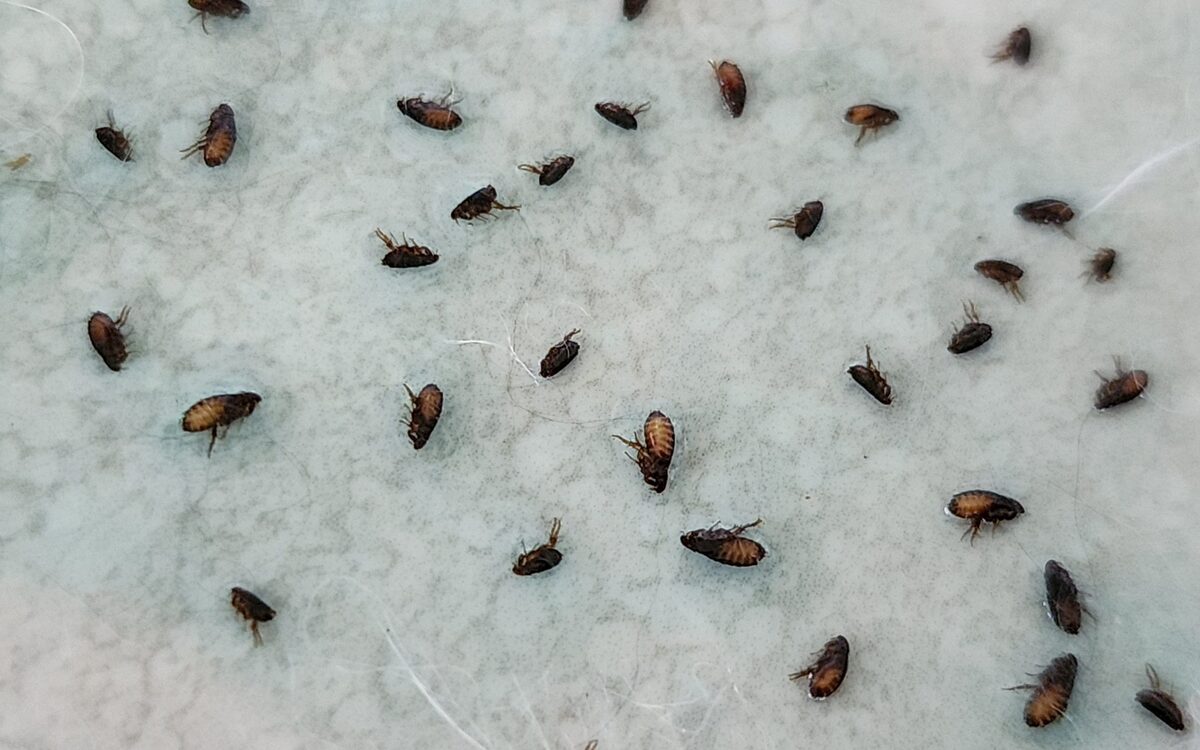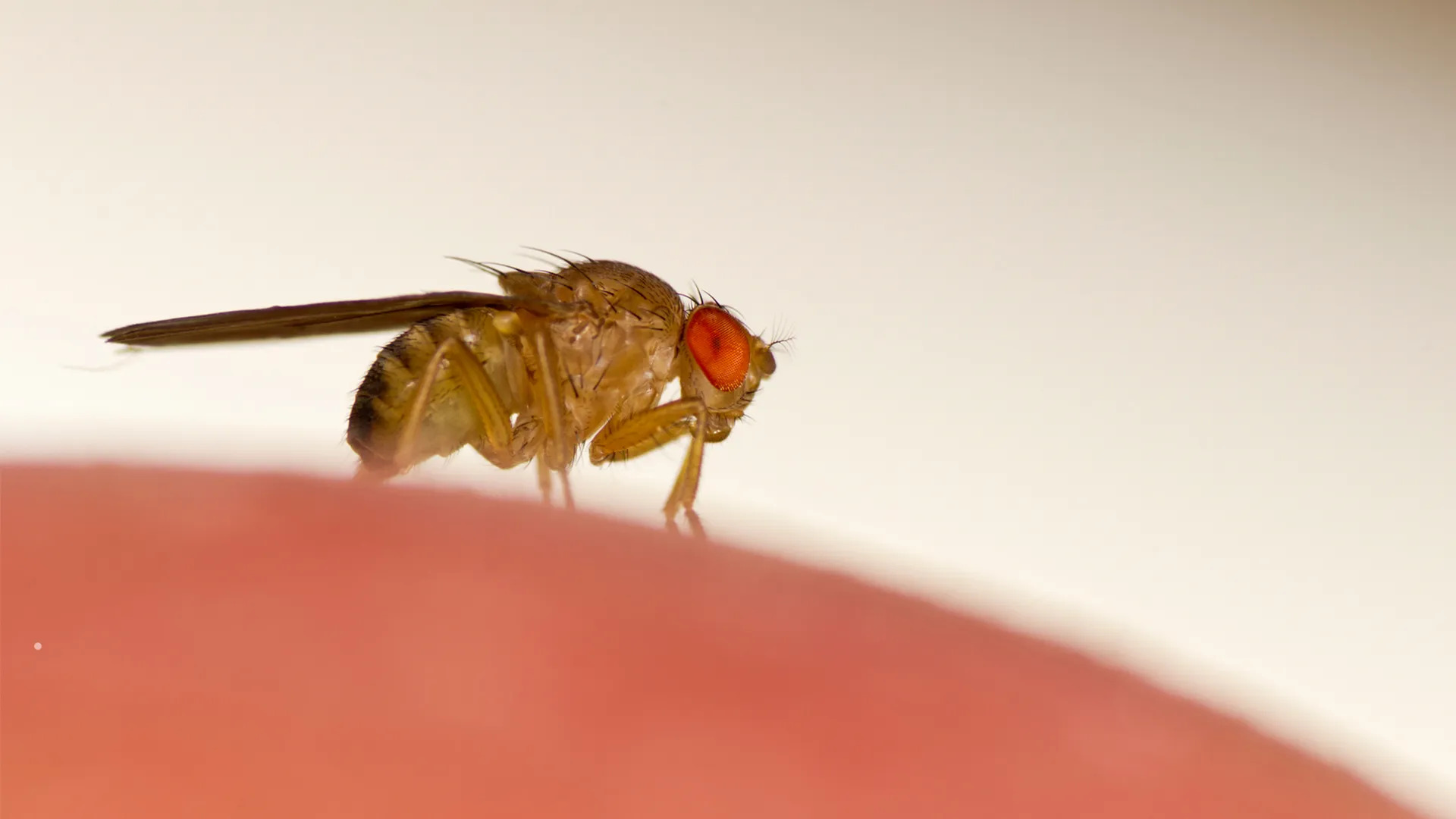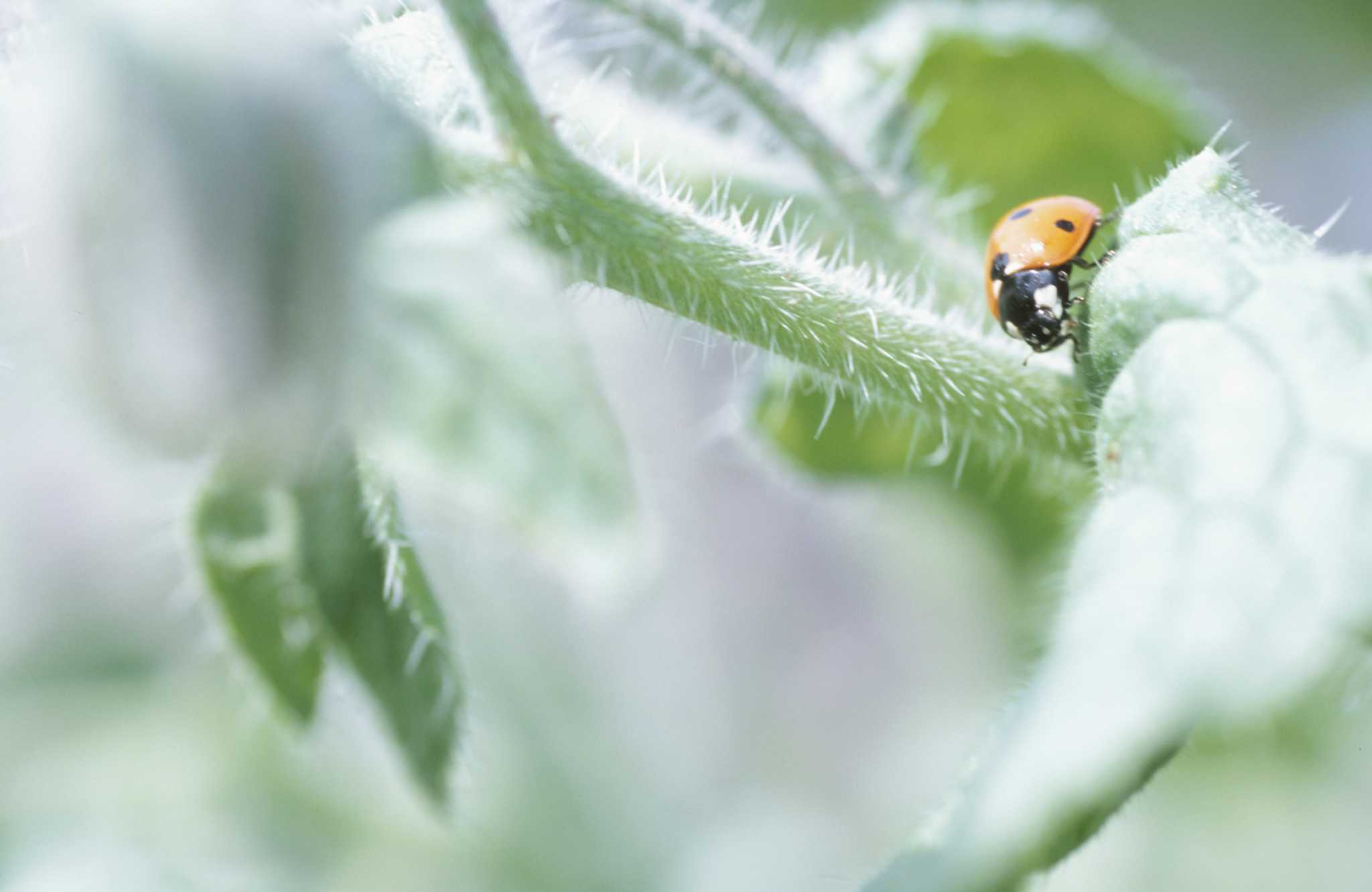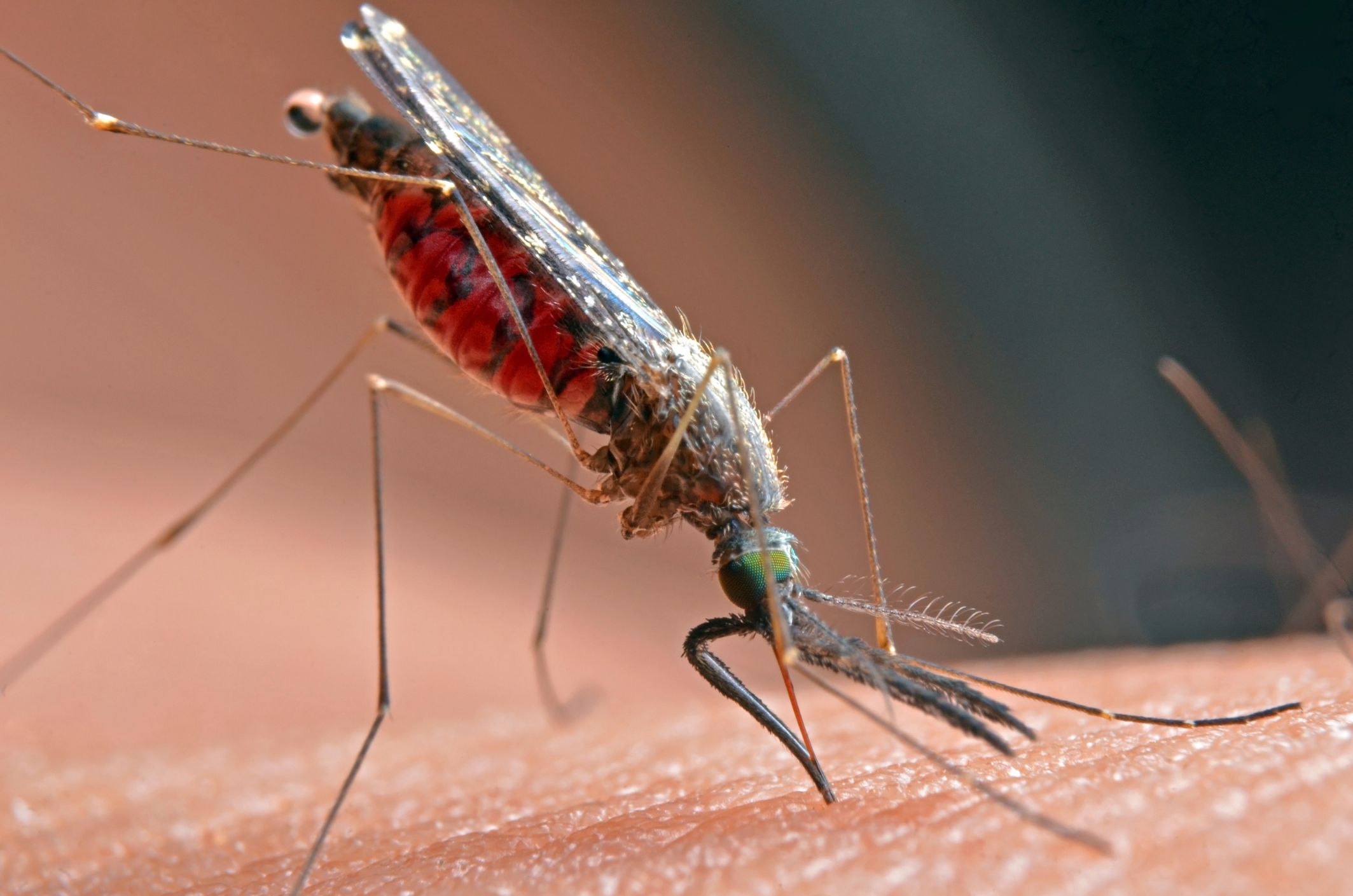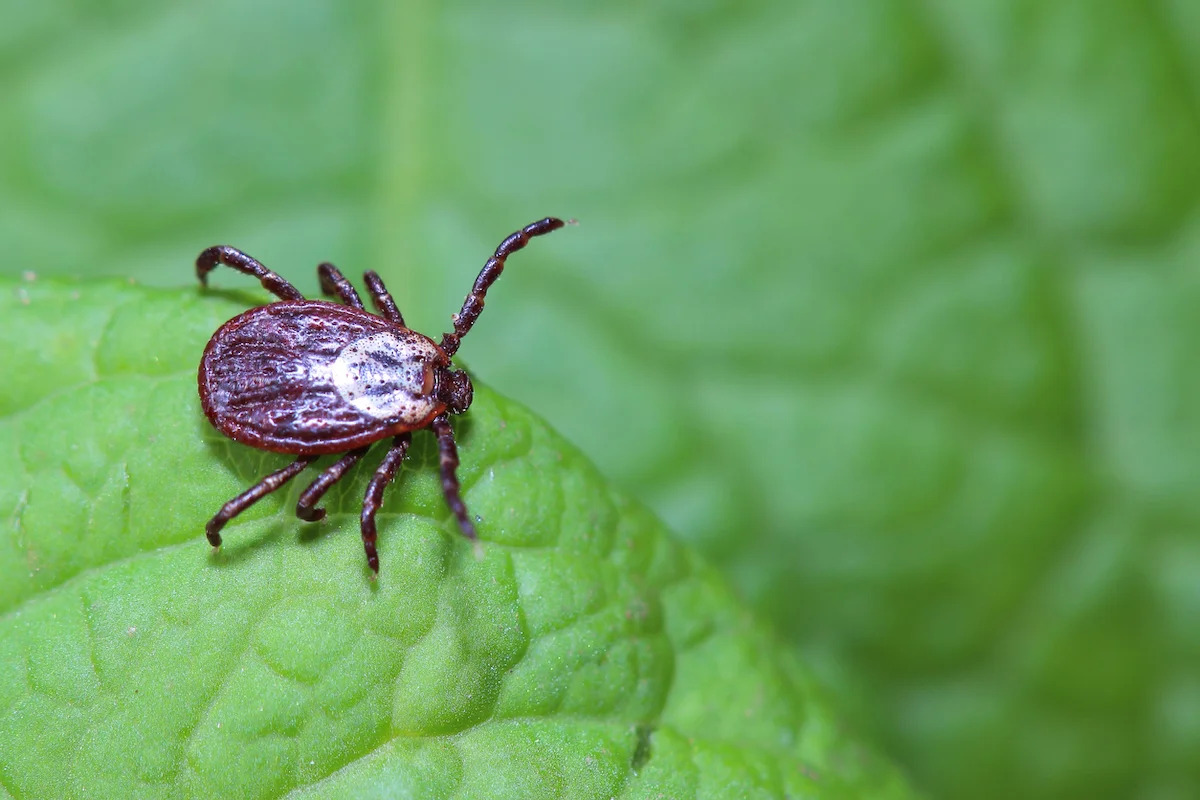Home>Gardening News and Trends>Latest News>What Does Insecticide Do To Insects


Latest News
What Does Insecticide Do To Insects
Modified: February 10, 2024
Discover the latest news on insecticides and their effects on insects. Stay informed about the impact of insecticides on insect populations and the environment.
(Many of the links in this article redirect to a specific reviewed product. Your purchase of these products through affiliate links helps to generate commission for Chicagolandgardening.com, at no extra cost. Learn more)
Table of Contents
Introduction
Welcome to the fascinating world of insecticides! Whether you’re a curious individual, an avid gardener, or someone concerned about pest control, understanding the effects of insecticides on insects is essential. Insecticides play a crucial role in managing pest populations and protecting crops, but it’s important to delve deeper into their impact to ensure their responsible and effective use.
Insecticides are chemical substances designed to eliminate or control insects. They are widely used in agriculture, public health, and residential settings to combat pests that pose risks to human health, damage crops, or disrupt ecosystems. Insecticides provide an important tool for pest management, but their use should be carefully considered to minimize unintended consequences.
How do these insecticides work exactly? Well, let’s find out!
In this article, we will explore the mechanisms by which insecticides affect insects, the impact of their use on insect populations, the behavioral changes induced by these chemicals, and the development of insecticide resistance. We will also discuss the environmental implications of insecticide use and the potential health concerns associated with their application.
By gaining insights into these aspects, we can make informed decisions about the use of insecticides and explore alternative pest management strategies when applicable. So, join us on this educational journey as we unravel the secrets of what insecticides do to insects!
Definition of Insecticide
Insecticides are chemical compounds formulated to target and control insect populations. They are specifically designed to kill or repel insects that pose a threat to human health, agricultural crops, livestock, or the environment. Insecticides come in various forms, including liquids, powders, granules, and aerosols, and they can be applied through spraying, dusting, or systemic application.
The primary function of insecticides is to disrupt the normal functioning of an insect’s body, causing injury or death. They achieve this by affecting the nervous system, metabolism, reproductive system, or other vital physiological processes of the target insects. Different types of insecticides may have different modes of action depending on their chemical composition and target pests.
There are several classes of insecticides commonly used today, including organophosphates, pyrethroids, neonicotinoids, and carbamates. Each class has specific characteristics and modes of action. For example, organophosphates inhibit the activity of an enzyme called acetylcholinesterase, which is essential for nerve signal transmission in insects. Pyrethroids, on the other hand, disrupt the nerve cell membranes of insects, causing paralysis and eventual death.
It’s important to note that while insecticides are effective in controlling insect populations, they can also have unintended consequences. These chemicals do not discriminate between harmful pests and beneficial insects, such as pollinators and natural predators, which are essential for ecosystem balance and agricultural productivity. Therefore, proper application and careful consideration of alternative pest management approaches are necessary to minimize ecological disruptions.
When using insecticides, it is crucial to select the appropriate product for the target insect and follow the manufacturer’s instructions regarding dosage, application methods, and safety precautions. Additionally, it is advisable to consult with local experts or agricultural extension services to ensure responsible and effective use of these chemicals.
Now that we understand the definition of insecticides, let’s explore how they work and the mechanisms by which they impact insects.
How Insecticides Work
Insecticides work by targeting specific physiological processes in insects to disrupt their normal functioning. The mode of action depends on the chemical composition of the insecticide and its interaction with the insect’s body. Let’s explore some common mechanisms through which insecticides work:
- Neurotoxicity: Many insecticides interfere with the normal functioning of an insect’s nervous system. They target key enzymes, receptors, or ion channels involved in transmitting nerve signals. By disrupting these processes, insecticides disrupt communication between neurons, leading to paralysis or death in the insect.
- Metabolic Disruption: Some insecticides target metabolic pathways in insects. They can inhibit enzymes necessary for key biochemical reactions or interfere with energy production. By disrupting metabolic processes, insecticides weaken the insect’s ability to survive and reproduce.
- Chitin Inhibition: Chitin is a tough, flexible polymer that forms the exoskeleton of insects. Insecticides that inhibit chitin synthesis interfere with the insect’s ability to molt and grow. This leads to malformed exoskeletons, inhibiting normal development and ultimately causing the death of the insect.
- Reproductive Interference: Certain insecticides target the reproductive system of insects. They can disrupt mating behavior, hormone regulation, or egg production. By affecting the reproductive capabilities of insects, these insecticides can control population growth and reduce pest numbers.
It is important to note that different classes of insecticides may have different modes of action and target specific insect groups. For example, neonicotinoids primarily affect the nervous system of insects, while insect growth regulators disrupt the growth and development of immature stages.
However, it’s worth emphasizing that the effectiveness of insecticides can be influenced by various factors. Insects with natural resistance or mutations in target sites may be less susceptible to certain insecticides. Additionally, environmental conditions and application methods can impact the efficacy of insecticides.
Understanding how insecticides work is crucial for selecting the right type of insecticide for specific pests and ensuring proper application. When using insecticides, it is important to follow label instructions, wear appropriate protective gear, and consider integrated pest management strategies to minimize reliance on chemical control.
Now that we have explored how insecticides work, let’s move on to the impact of insecticides on insect populations.
Impact of Insecticides on Insect Populations
The use of insecticides can have significant effects on insect populations, leading to both intended and unintended consequences. Let’s delve into the various ways in which insecticides impact insect populations:
- Pest Control: The primary goal of using insecticides is to control pest populations. Insecticides can effectively reduce the numbers of harmful pests that damage crops, spread diseases, or pose health risks. By targeting specific pests, insecticides help protect agricultural yields and public health.
- Non-Target Effects: While insecticides are designed to target specific pests, they can also affect non-target insects. This includes beneficial insects such as pollinators, natural predators, and parasitoids that play vital roles in ecological balance. Unintended exposure to insecticides can reduce their populations, disrupting ecosystem dynamics and potentially leading to ecological imbalances.
- Secondary Pest Outbreaks: In some cases, the use of insecticides can inadvertently lead to secondary pest outbreaks. This occurs when insecticides eliminate the natural predators or competitors of other pests, allowing them to multiply unchecked. It highlights the importance of considering the broader ecological impact of insecticide use and adopting integrated pest management strategies.
- Resistance Development: Continued use of insecticides can lead to the development of resistance in insect populations. Some insects may possess genetic mutations or physiological adaptations that make them less susceptible to the effects of insecticides. Over time, repeated exposure to the same insecticide can select for resistant individuals, resulting in reduced efficacy of the insecticide.
- Disruption of Food Chains: As insecticides affect insect populations, they can disrupt food chains and ecological interactions. The loss of certain insect species can influence the availability of prey for higher trophic levels, impacting the populations of predators and other organisms within the ecosystem.
It is important to incorporate strategies that minimize the impact of insecticides on non-target organisms and prevent the development of resistance. Integrated pest management (IPM) approaches that combine various pest control methods, such as cultural practices, biological controls, and targeted insecticide use, can help maintain a balance between pest control and ecological preservation.
By understanding the impact of insecticides on insect populations, we can make informed decisions about their use and adopt more sustainable and environmentally friendly approaches for pest management.
Next, let’s explore the effects of insecticides on insect behavior.
Effects of Insecticides on Insect Behavior
Insecticides not only impact the physiology and populations of insects but can also alter their behavior in significant ways. Let’s examine the effects of insecticides on insect behavior:
- Altered Feeding Behavior: Insecticides can disrupt the feeding behavior of insects. They may inhibit the insects’ ability to locate or recognize food sources, leading to reduced feeding or starvation. In some cases, insects may also exhibit abnormal feeding patterns or preferences due to the influence of insecticides.
- Disrupted Reproductive Behavior: Insecticides can interfere with the reproductive behavior of insects. They may disrupt mating rituals, decrease fertility, or even cause sterility in some cases. These effects can have long-term consequences on the population dynamics of insects, potentially leading to reduced reproductive success and population declines.
- Altered Locomotion: Certain insecticides can impair the locomotion and motor abilities of insects. They may induce paralysis or disorientation, preventing insects from moving normally and carrying out essential tasks like foraging, mating, and seeking shelter.
- Changes in Aggregation and Dispersion: Insecticides may influence the aggregating or dispersing behaviors of insects. Some insects exhibit aggregation behavior, where they gather in large numbers for mating, protection, or resource exploitation. Insecticides can disrupt this behavior, leading to the dispersion of insects or the disruption of social structures within their populations.
- Disrupted Navigation and Orientation: Insects rely on various cues to navigate their environments, including visual landmarks, chemical trails, or even the Earth’s magnetic field. Insecticides can interfere with these sensory inputs, impairing the insects’ ability to navigate and orient themselves. This can have consequences for their foraging, mating, and migration patterns.
It is important to consider these behavioral effects when using insecticides, as they can have far-reaching consequences beyond direct mortality. Disrupted feeding or mating behavior, for example, can hinder the survival and reproductive success of insect populations, making them more susceptible to other threats or disrupting ecological interactions.
Furthermore, altered insect behavior can impact the effectiveness of pest control strategies. Insects that exhibit avoidance behavior towards treated areas may reduce their exposure to insecticides, limiting their effectiveness and potentially leading to the development of resistance. Understanding and anticipating these behavioral changes is essential for implementing effective and sustainable pest management practices.
As we have seen, insecticides have significant impacts on insect behavior, and their effects need to be carefully considered to ensure the efficacy and ecological sustainability of pest control efforts.
Now let’s explore another important aspect related to insecticides – insecticide resistance.
Insecticide Resistance in Insects
Insecticide resistance is a phenomenon where insects develop the ability to tolerate or survive exposure to insecticides that were previously effective against them. It is a major challenge in pest management and can significantly impact the efficacy of insecticides. Let’s delve into the factors contributing to insecticide resistance and its implications:
- Genetic Variation: Insects exhibit genetic variation within their populations. Some individuals may possess genetic traits that make them less susceptible to the effects of insecticides. When exposed to insecticides, these resistant individuals are more likely to survive and reproduce, passing on their resistance genes to future generations.
- Selection Pressure: The repeated use of the same insecticide exerts selection pressure on insect populations. When insecticides are used extensively, susceptible individuals are eliminated, while resistant individuals survive and multiply. Over time, the proportion of resistant individuals in the population increases, leading to reduced effectiveness of the insecticide.
- Multiple Resistance: In some cases, insects can develop resistance to multiple classes of insecticides. This occurs when insects possess multiple mechanisms of resistance or when different resistance genes are present in the population. Multiple resistance reduces the efficacy of various insecticides, limiting the available options for pest control.
- Cross-Resistance: Cross-resistance is a phenomenon where insects that develop resistance to one insecticide also exhibit reduced susceptibility to other insecticides with a similar mode of action. This occurs when the resistance mechanism confers protection against multiple insecticides, making it more challenging to find effective alternatives for pest control.
- Resistance Management: To address insecticide resistance, it is essential to implement resistance management strategies. This involves the careful selection and rotation of insecticides with different modes of action, incorporating non-chemical control methods, and adopting integrated pest management approaches. These strategies aim to delay the development of resistance and maintain the efficacy of available insecticides.
It is crucial to monitor insect populations regularly for signs of resistance and adjust pest management strategies accordingly. This includes the development of insecticide resistance monitoring programs, promoting responsible insecticide use, and investing in research and development of new insecticides with novel modes of action.
By understanding the mechanisms and implications of insecticide resistance, we can work towards sustainable pest management practices that minimize the development and impact of resistance while effectively controlling pests.
Now, let’s move on to the environmental impact of insecticides.
Environmental Impact of Insecticides
The use of insecticides can have significant environmental impacts, affecting ecosystems, non-target organisms, and even human health. Let’s explore some of the key environmental considerations when using insecticides:
- Non-Target Organisms: Insecticides can harm non-target organisms, including beneficial insects, birds, mammals, and aquatic life. These unintended effects can disrupt ecological balance, reduce biodiversity, and have long-term consequences on the functioning of ecosystems.
- Water Contamination: Insecticides can contaminate water bodies through runoff or leaching into groundwater. This contamination poses risks to aquatic organisms, including fish, amphibians, and invertebrates. It can also impact water quality for human consumption and agricultural purposes.
- Soil Health: Some insecticides can persist in the soil, affecting beneficial soil organisms and microbial activity. This can lead to a decline in soil health and fertility, impacting agricultural productivity and long-term ecosystem sustainability.
- Pollinator Decline: Insecticides, especially those with systemic properties, can be toxic to pollinators such as bees, butterflies, and other insects essential for plant reproduction. The decline in pollinator populations can have far-reaching impacts on agricultural production and the diversity of flowering plants.
- Resistance in Non-Target Organisms: Non-target organisms can also develop resistance to insecticides, leading to reduced efficacy of alternative pest control methods. For example, herbicide-resistant weeds have become increasingly prevalent due to the repeated use of herbicides in agricultural settings.
- Long-Term Environmental Persistence: Some insecticides can persist in the environment for extended periods, accumulating in the food chain and posing risks to higher trophic levels. This persistence can increase the likelihood of exposure to both target and non-target organisms, leading to unintended ecological consequences.
To mitigate the environmental impact of insecticides, it is crucial to adopt sustainable pest management practices. This includes minimizing unnecessary insecticide use, implementing integrated pest management strategies, utilizing biological controls, and promoting alternative approaches such as crop rotation, habitat diversification, and precision farming techniques.
Regulatory measures and guidelines for safe handling, storage, and disposal of insecticides also play a vital role in minimizing their environmental impact. It is essential for users to strictly follow these protocols to ensure responsible use and minimize unintended harm to the environment.
By considering the potential environmental impacts of insecticides and adopting proactive measures, we can strike a balance between effective pest management and the preservation of a healthy and sustainable environment.
Now, let’s explore the health concerns related to the use of insecticides.
Health Concerns Related to Insecticide Use
The use of insecticides raises important health concerns for both humans and animals. These concerns arise due to the potential toxicity of these chemicals and the risk of exposure. Let’s examine some of the key health considerations related to the use of insecticides:
- Acute Health Effects: Insecticides, especially those with high toxicity, can cause acute health effects in humans upon exposure. These effects may include skin and eye irritation, respiratory problems, nausea, dizziness, and in severe cases, even organ damage or death. Proper handling and adherence to safety precautions are crucial to minimize these risks.
- Chronic Health Effects: Long-term exposure to certain insecticides may lead to chronic health effects. Studies have linked prolonged exposure to certain insecticides with increased risks of cancer, neurological disorders, reproductive issues, and endocrine disruption. It is important to minimize exposure and follow recommended safety guidelines.
- Occupational Hazards: Individuals who work regularly with insecticides, such as farmers, agricultural workers, and pest control professionals, face a higher risk of exposure. Occupational safety measures, including the use of personal protective equipment and adherence to proper application techniques, are critical to protect individuals from the potential health hazards associated with insecticide use.
- Residential Exposure: Insecticides used in and around homes pose risks to residents, particularly children and pets who may come into direct contact with treated surfaces or inhale pesticide residues. It is essential to follow instructions for indoor use, store insecticides safely, and minimize unnecessary pesticide applications in residential areas.
- Environmental Impact on Animals: Insecticides can pose health risks to animals, including pets, livestock, and wildlife. Direct exposure to insecticides or consumption of contaminated food and water can lead to acute or chronic toxic effects, affecting the overall health and well-being of animals within affected ecosystems.
- Drift and Exposure Reduction: Pesticide drift can occur when insecticides are sprayed, leading to unintended exposure in neighboring areas. Proper application techniques, such as adjusting spray equipment and considering weather conditions, are necessary to mitigate drift and reduce the risk of exposure to non-target organisms.
It is important to follow label instructions, handle insecticides responsibly, and seek guidance from local authorities or experts regarding safe and effective use. In situations where alternative pest control methods are available, prioritizing non-chemical options can help minimize health risks associated with insecticide use.
By being aware of the potential health concerns related to insecticides and adopting appropriate safety measures, we can ensure the well-being of both humans and animals while effectively managing pests.
Now, let’s summarize the key points discussed in this article.
Conclusion
Insecticides play a vital role in pest control and crop protection, but understanding their impact on insects and the environment is crucial. Through this article, we have explored the definition of insecticides and how they work, examining their effects on insect populations, behavior, and the development of resistance. We have also delved into the environmental implications of insecticide use and the health concerns associated with their application.
Insecticides, when used responsibly, can effectively control pest populations and safeguard human health and agricultural productivity. However, it is essential to consider the potential unintended consequences of insecticide use, such as harming non-target organisms, disrupting ecosystems, and the development of resistance.
Environmental impacts include water and soil contamination, pollinator decline, and the disruption of ecological interactions. Health concerns arise from both acute and chronic exposure to insecticides, emphasizing the need for proper handling, adherence to safety precautions, and the consideration of alternative pest management approaches.
By adopting integrated pest management strategies, minimizing unnecessary pesticide use, and promoting sustainable practices, we can strike a balance between pest control and environmental preservation. This includes utilizing biological controls, targeted insecticide applications, crop rotation, and habitat preservation for beneficial organisms.
In conclusion, an informed and responsible approach to insecticide use is crucial for preserving both the effectiveness of these chemicals and the long-term health of ecosystems. By understanding the complexities of insecticides and their effects on insects, we can make well-informed decisions, minimize unintended consequences, and work towards more sustainable and effective pest management practices.

